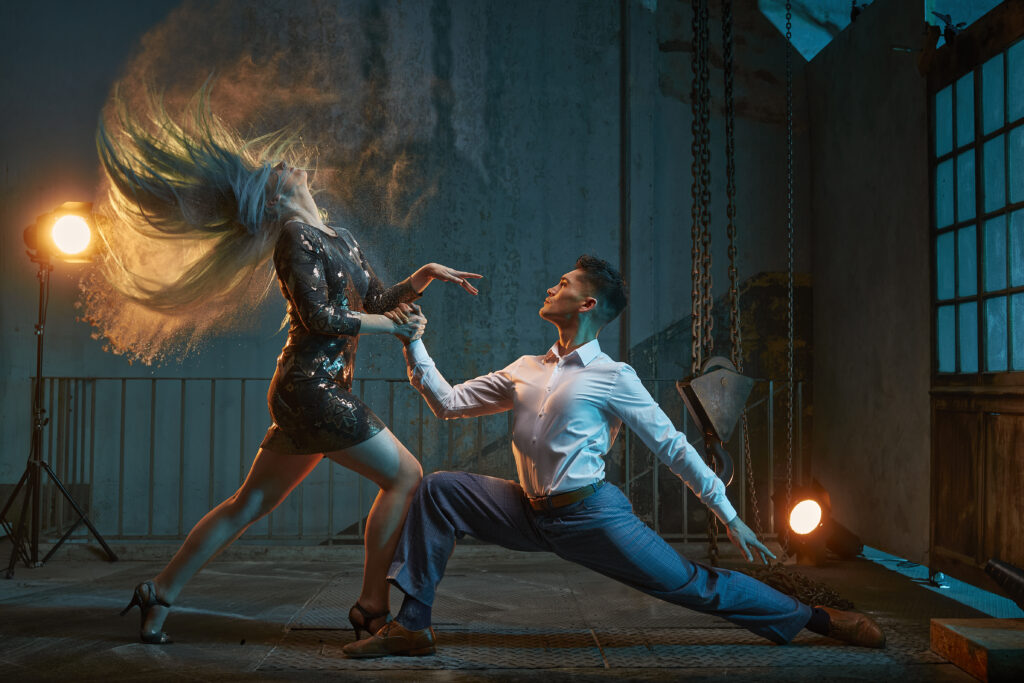
I have consistently challenged perspectives on musicality and music interpretation throughout my dance and music career. I often ponder whether I am overly focused on semantics. Nevertheless, my goal is to underscore the significant distinction between the two, with the confident intention of aiding dancers in demystifying the “gimmick” of musicality. I encourage them to apply their ingenuity to their dance, leveraging the inherent creativity they possess. Let’s transform perceptions into a new perspective.
In the realm of music and dance, two terms often intermingle but hold distinct significance in English. While both are integral to art forms, grasping the disparities between them can deepen our appreciation and enhance our ability to connect with and dance with the soul of the music. In this exploration, I shed light on the distinctions between musicality and music interpretation, emphasizing why the latter is paramount for both social dancers and concert performers.
The How : Musicality: A Foundation for Understanding
For a dancer or musician, musicality is a part of their skill set. Based on the Merriam-Webster definition: “Musicality is “sensitivity to, knowledge of, or skill for music” or “the attribute or condition of being musical”. We can refer to an entity’s’ (animate or inanimate) ability to show or exude the various elements of music, such as rhythm, melody, and dynamics. Some examples in nature are the sound bees’ wings make when sending messages for where the best pollen is, the sound leaves on a tree when wind passes by, a heart beat, or the sound and gate of a person who is walking with a limp.
In dance, musicality is crucial for maintaining proper timing, rhythm, and flow. However, musicality alone does not capture the full essence of artistic expression nor convey what a social dancer thinks or feels about a particular song.
The What: Music Interpretation: Elevating the Artistic and Social Conversation
Music Interpretation: Elevating Dance Through Emotional Connection
Music interpretation goes beyond the confines of musicality, delving into the emotional and narrative layers of a composition. This intricate approach involves not only understanding the music but also conveying its essence through movement, expression, and personal connection. Such nuanced engagement enhances the experience, making it a powerful tool for both social dancers and concert performers.
Transforming Social Dance: A Meaningful Conversation with Music
For social dancers, music interpretation is the key to transcending a dance from a mere sequence of steps into a profound conversation with the music. By infusing personal emotions, mood, perceptions, and storytelling into their movements, dancers can create an immersive experience. Explore different movements and execution techniques on Miriam Lea Dance Classes to highlight specific elements of the music, whether it’s the singer or the entire orchestra. A skilled interpreter seamlessly navigates through a piece, elevating social dancing from a technical exercise to an emotional art form.
Tango Performers: Breathing Life into Presentations Through Music Interpretation
Tango performers leverage music interpretation to breathe life into their presentations. Beyond showcasing technical prowess, a performer who interprets the music communicates the composer’s intentions, connecting with the audience on a visceral level. This deepens the impact of the performance, leaving a lasting impression that extends beyond technical proficiency.
Why Music Interpretation Matters
Emotional Resonance: Explore the emotional depth of compositions through music interpretation, fostering a profound connection with your audience or dance partner.
Individual Expression: While musicality provides a foundation, music interpretation empowers individuals to express their unique personalities and perspectives, contributing to a diverse and enriched artistic landscape.
Dynamic Communication: Especially beneficial for social dancers, music interpretation transforms the dance floor into a dynamic exchange of emotions, stories, and shared experiences.
Artistic Evolution: For concert performers, embracing music interpretation propels the art form forward, encouraging experimentation and evolution in how music is experienced and expressed.
Unlock the true potential of dance through the art of music interpretation!
En Fin
In the intricate tapestry of music and dance, both musicality and music interpretation play pivotal roles. However, it is the latter that propels the art form to new heights, providing a platform for deeper emotional connection, individual expression, and dynamic communication. Whether on the social dance floor or the concert stage, the ability to interpret music transforms movement into a compelling narrative, transcending mere steps and notes to create an unforgettable artistic experience.
What to learn more about ear training and coordinating your body to interpret and express yourself in your dancing? Click Below!
Have a question about this article? Ask Miriam!